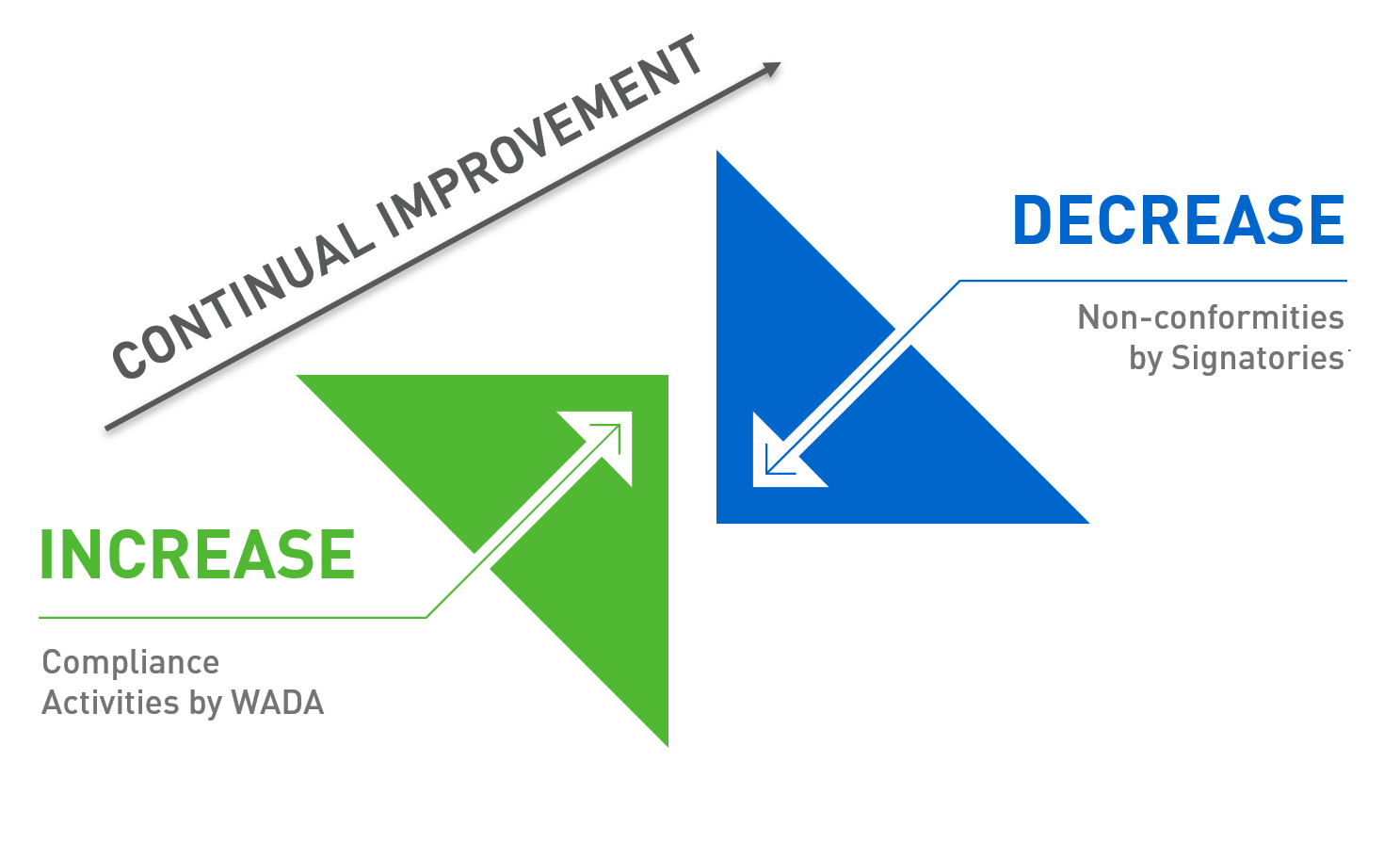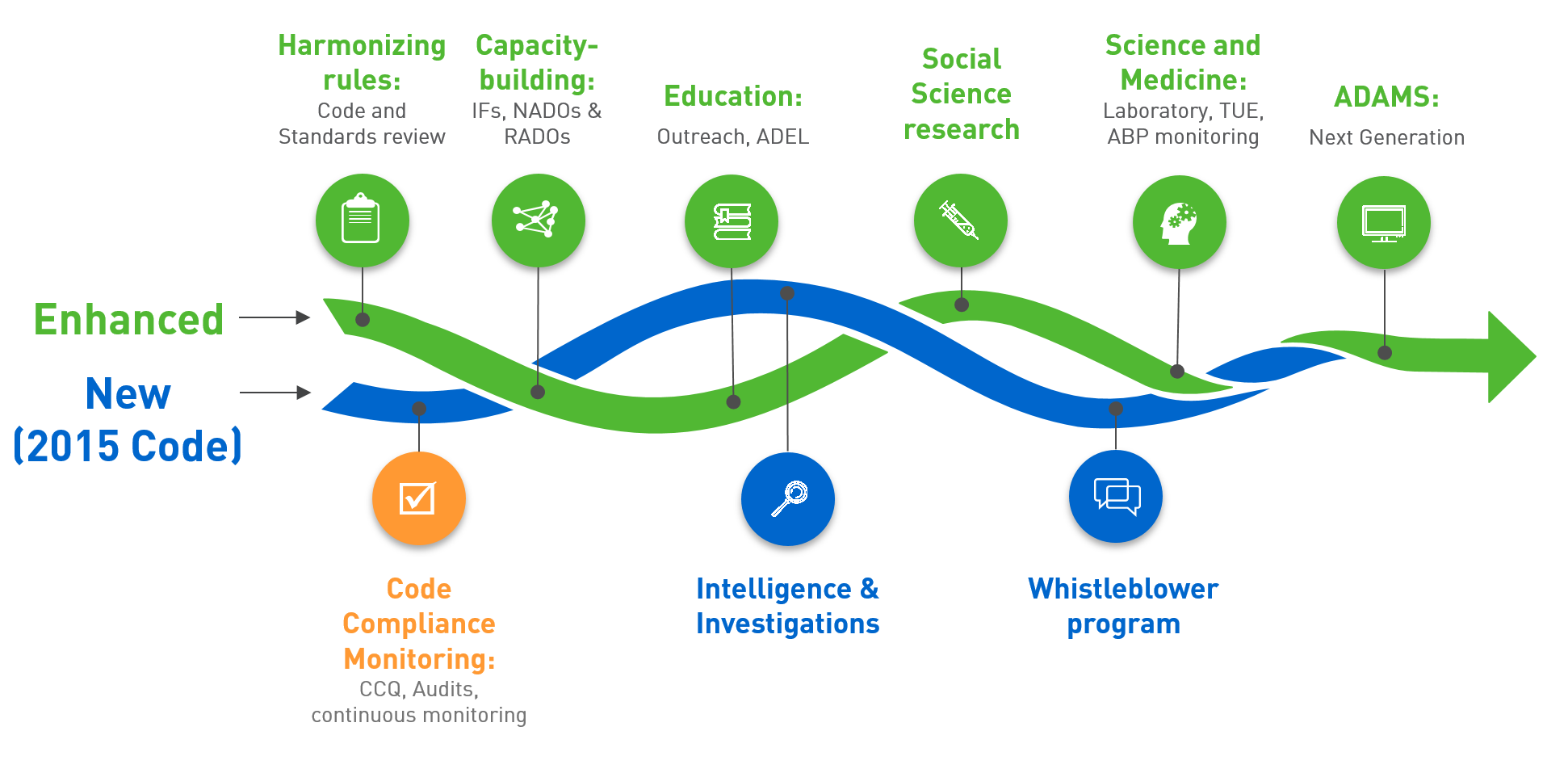Story
WADA Compliance – raising the standard of Anti-Doping Organizations’ work worldwide


In this latest edition of ‘Spotlight’, which aims to inform stakeholders of the daily activities being carried out around the globe by the World Anti-Doping Agency (WADA) team and its partners to deliver clean sport, we look at the vital area of compliance with the World Anti-Doping Code (Code) and how Anti-Doping Organizations (ADOs) are being held to rigorous standards worldwide.
WADA’s role as the global regulatory body
WADA’s primary role as the global regulatory body is to develop, harmonize and coordinate anti-doping rules and policies across all sports and countries. Accordingly, one of the Agency’s main responsibilities is to ensure and monitor effective implementation of the Code and its six* related International Standards (Standards).
While it is a challenge for WADA to draft and then agree the Code and Standards with its almost 700 Signatories worldwide – which includes in particular National Anti-Doping Agencies (NADOs), International Federations (IFs) and Major Event Organizations (MEOs) – ensuring that these Signatories comply with the rules is a whole other challenge.
WADA’s Compliance Monitoring Program
Prior to 2016, WADA wanted to ensure that Signatories implemented the Code and Standards into their rules, regulations, legislation and programs. In 2016, WADA re-focused its efforts on ensuring that Code Signatories not only had compliant rules in place but that they were also implementing compliant anti-doping programs, which WADA could monitor.
To do so, WADA initiated development of an ISO-certified Code Compliance Monitoring Program, which aims to reinforce athlete and public confidence in the standard of ADOs’ work worldwide.
In terms of Program governance, it includes an external, independent Compliance Review Committee (CRC) and an internal Compliance Taskforce (Taskforce). The CRC provides expert advice, recommendations and guidance to WADA’s Executive Committee, Foundation Board and Taskforce on individual cases and compliance activities. It includes an independent Chair, two compliance experts from non-sporting areas, an athlete representative, a government representative and a Sport Movement representative. The Taskforce consists of an internal working group of WADA staff from different departments and offices whose activities are centralized and coordinated. If any non-conformity is identified, the Taskforce facilitates an open dialogue with the Signatory concerned and recommends corrective actions. Support and assistance are provided to help the Signatory address all non-conformities within an agreed timeframe.
The Program includes the following four components:
- Code Compliance Questionnaire
The CCQ was launched in 2017 as a tool to measure compliance of Signatories against the mandatory requirements of the Code and Standards. WADA reviews all returned questionnaires and develops detailed corrective action plans designed to assist Signatories in enhancing their anti-doping programs. The next questionnaire is planned for 2022.
- Audits
WADA launched in 2016. The Agency conducts in-person and desk (remote) audits of Signatories by trained individuals from WADA and external experts in anti-doping, in which Signatories’ programs are closely reviewed against the requirements set out in the Code and Standards.
- Continuous Monitoring Program
WADA launched in 2019, complements the questionnaire and audits by monitoring a number of key program areas on which WADA has information and data.
- Signatories’ anti-doping rules, regulations and legislation
Where applicable (i.e., where a country decides to implement the Code through legislation), to ensure compliance with the Code and International Standards. Individualized assistance and guidance are also provided by WADA in this area.
In addition, WADA uses other sources of information to monitor and assess the quality of anti-doping programs, including ADAMS, investigations and any other intelligence collected or received. WADA continually provides Signatories with assistance and guidance in implementing and complying with the Code and International Standards.
Underpinning the process has been the International Standard for Code Compliance by Signatories (ISCCS), which came into effect on 1 April 2018, and which clearly sets out the ways WADA supports Signatories in achieving, maintaining and, where applicable, regaining Code compliance. It also provides a necessary and robust legal framework for cases of non-compliance, highlighting a range of graded, predictable and proportionate sanctions for cases of non-compliance by Signatories. Due to the high number of Signatories, the ISCCS includes provision for WADA to best utilize its resources by prioritizing.

Some of the members of WADA’s Compliance Team at the Agency’s Montreal Headquarters.
A Reflection on the Evolution of Anti-Doping
Frédéric Donzé, WADA’s Chief Operating Officer who oversees the Compliance Monitoring Program, says: “This is a very ambitious undertaking. At its core, compliance is about adherence to the global anti-doping rules by Code Signatories – those that are responsible for applying and enforcing them. The ultimate goal of compliance is to level the playing field, that is, to ensure that every Signatory complies with its obligations, and therefore every athlete is subject to the same rules, no matter the sport or geographic location.
“And, if those Signatories or athletes choose to break the rules, everyone is clear on what the consequences would be. It is clear to us that the responsibility needs to be shared. Without Signatories adhering to the agreed-upon rules, how can the athletes be asked to do the same?
“We believe it is a very important step that those who are not meeting the required levels of rules or program implementation are encouraged and supported to meet the requirements and, in the cases where support and help cannot bring them where they should be, that they can be held accountable and can face consequences,” says Donzé.
WADA Director, Standards and Harmonization, Tim Ricketts, says: “Clean sport is evolving. The 2017 Code Compliance Questionnaire identified issues in areas such as developing an intelligence and investigations policy, how ADOs develop doping risk assessment, how they create an effective registered testing pool, how they conduct target testing and deploy sport-specific analysis, and how they retain samples and re-analyze them. A decade ago, if you had asked an anti-doping expert what anti-doping covered, they would have said it was a mix of a few pillars: education, testing and, where doping is found, sanctions.
“Some areas of anti-doping have higher levels of non-compliance than others, particularly around the establishing an effective testing program through a detailed risk assessment followed by the establishment of Test Distribution Plan. From the results of the last questionnaire and the audits conducted to date, we have been able to further tailor our support, including by developing more than 15 templates and checklists to assist Signatories meet their compliance obligations, with several more in the pipeline,” says Ricketts.
Since 2016, WADA has carried out a total of 46 audits of International Federations and National Anti-Doping Organizations, 18 in 2019 alone. The audits and the questionnaire have seen nearly 6,000 corrective actions implemented by Signatories. That is 6,000 individual improvements – some small and technical by nature, others more significant – made to the global anti-doping program that would not otherwise have been achieved.

As WADA increases its compliance monitoring activities it is anticipated that non-conformities by Signatories will reduce as the global anti-doping system continues to improve.
Partnering with Impact
Since 2015, WADA has opened 155 compliance procedures. “In the majority of cases, all non-conformities were addressed by the deadline (usually three months) with only 22 ADOs being declared as non-compliant,” says WADA’s Chief Compliance Manager, Emiliano Simonelli. “This shows how significant WADA’s policy of assistance and guidance has been in strengthening the overall system.”
Deputy Director (Audits and Monitoring Program), Standards and Harmonization, Kevin Haynes, says: "It is important to remember that compliance monitoring does not operate in isolation. It works hand in hand with program development and capacity building, and the daily work that WADA conducts with NADOs, IFs and Regional Anti-Doping Organizations worldwide to grow and improve anti-doping in sports and countries where it may be less developed. It also works in close collaboration with WADA's Intelligence and Investigations Department, which is better equipped to identify non-technical non-conformities or corrupt practices.

Code Compliance Monitoring is a key component of WADA's strategic priorities.
"We also collaborate with umbrella organizations of Signatories and other monitoring bodies, such as the Council of Europe, to further enhance the global level of ADO compliance. It is a truly enormous task to cover all sports across the whole world, especially given our limited resources, so to be able to rely on the cooperation of others is very important."
With its vigilant, ongoing and collaborative nature, the Program has enhanced and will strive to continue to raise the standard for anti-doping worldwide.
*Two additional Standards – on education and on results management – will be introduced in January 2021.
‘Spotlight’ previously focused on WADA’s innovative anti-doping education program.

